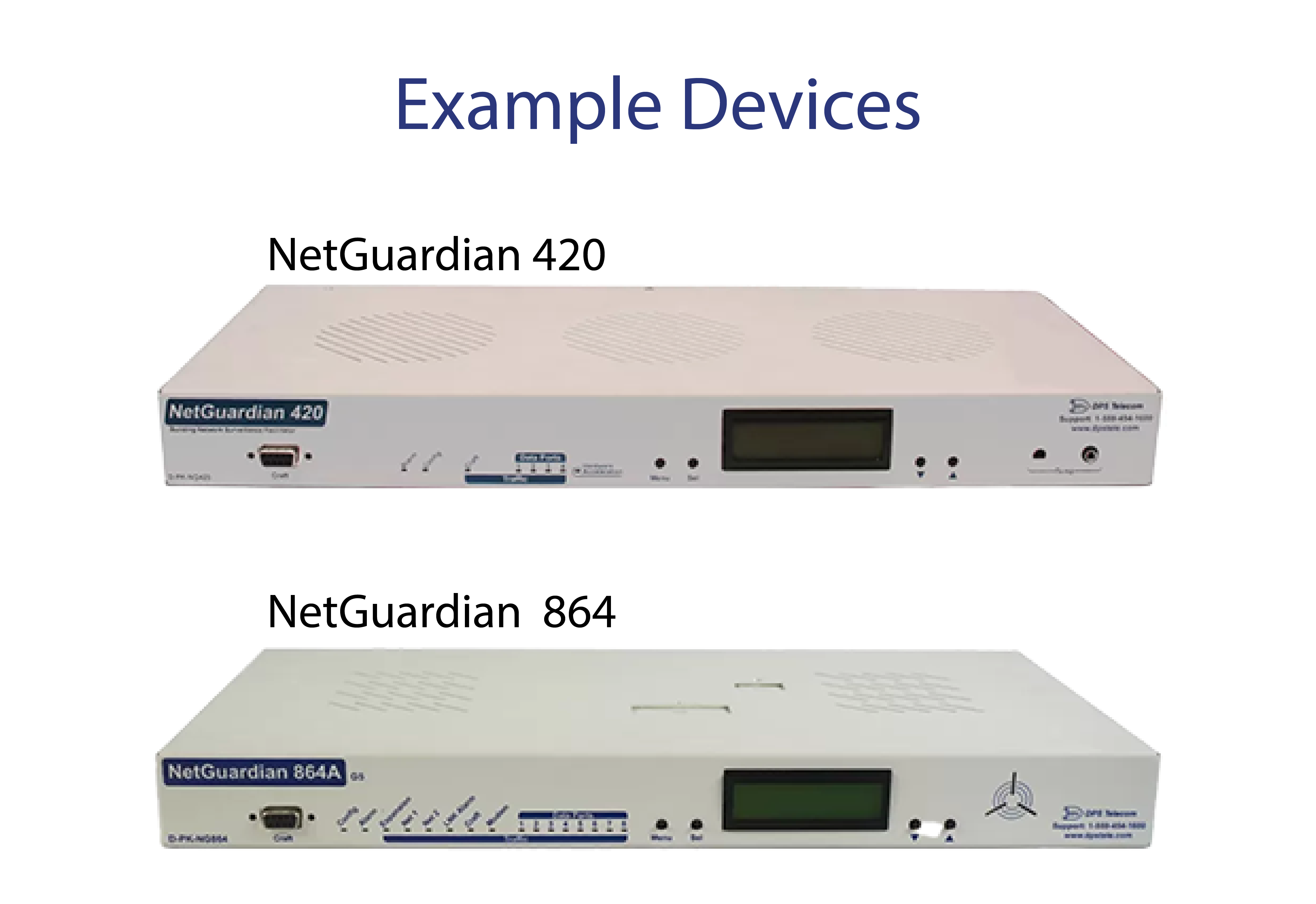Check out our White Paper Series!
A complete library of helpful advice and survival guides for every aspect of system monitoring and control.
1-800-693-0351
Have a specific question? Ask our team of expert engineers and get a specific answer!
Sign up for the next DPS Factory Training!

Whether you're new to our equipment or you've used it for years, DPS factory training is the best way to get more from your monitoring.
Reserve Your Seat TodayMonitoring the status of switch alarms is an important task for remote radio sites. However, doing so can be difficult. In some cases, the remote alarm sensing device does not work well with the web interface software.
At DPS Telecom, we understand the value in a user-friendly interface that works nicely with monitoring devices. As we look at a recent conversation with a client from a tactical communications equipment company, we will learn:

Client: I'm trying to find a solution for monitoring an open/closed switch alarm type at a remote radio site and send it over IP to a computer software application to monitor the alarm at a remote location. Do you have equipment to do this?
Jared: Hi. Yeah, that's exactly what we do. What sort of protocol is your computer application expecting? SNMP?
Client: I'm hoping the protocol between the remote alarm sensing device and computer software app is transparent to the end user and provides communications over a standard 802.11 Ethernet link.
Jared: Oh, okay. I was thinking you may already be using an application for other equipment. Our remote devices all have a web interface built in, so there would be no need for another application installed on the PC. You would simply install the device at your remote site, and then be able to log into it using a web browser from your PC.
Client: That would be perfect. Can you send me information on that unit to my email address? I'm an Applications Engineer and am designing an HF system for a customer that requires monitoring.
Jared: Yeah. A couple of questions first... How many open/closed switch alarms do you need to monitor? And what sort of power do you have available at the site? Do you have something like -48VDC or only commercial power like a wall outlet?
Client: I tried another company but they are way too expensive and have much more than I need for this project. I will need to monitor maybe 2-3 open/closed (gnd) conditions. Power is actually 220VAC/50 Hz in Vietnam.
Jared: Okay, we have a wall transformer for that.
Client: Very good. If you can send me a data sheet I can look it over and then see if I have more questions.
Jared: Sure. For a site with 3-4 dry contact alarms, I would recommend something like this - www.dpstele.com/pdfs/prod_sums/new/netguardian_lt_g2_ps.pdf.
Client: The opportunity is for 10 sites.
Jared: And we can remove some of the extra ports that you wouldn't use. So it would only have 4 dry contact alarm inputs.
Client: OK. So it looks like I can connect to 4 of the dry contact sensors and a current sensor too if necessary.
Jared: Yeah. If you need to monitor current, the current sensor (transducer) would output to the analog input of the unit.
Client: Is that the D-wire sensor input? I may actually need this too since I have an odd alarm circuit on one of my amps.
Jared: Yeah, it would be through the D-wire port. If you have time, I can give you a very quick demo of our equipment to show you how they work.
Client: Not right now, but maybe in the future. Do you have an image of the web browser interface?
Jared: So that is a device with the same software as the unit I sent you the datasheet. And that is the "monitor" view of the dry contact alarms. Also, these devices can send email notifications when anything is in alarm.
Client: Looks good. Can only one user log in to the unit at a time? I have a requirement for a local monitoring site at each radio site and then one headquarters monitoring site to monitor all 10 sites alarms.
Jared: There can be multiple people logged into the unit at once to view the monitoring sections. However, only one person can access the configuration section of the web interface at a time. We have equipment to monitor all of the remote units from one site as well.
Client: Yes. I can quote the 10 separate units for the radio sites and then another different monitoring unit at the headquarters. What device is that one?
Jared: www.dpstele.com/pdfs/prod_sums/ps-tminx.pdf.
Client: Yes, this will work. Thanks for your help. I'm going to request a quote on Monday.
Jared: Okay, sounds good. And if you'd like to see the equipment in action sometime next week, let me know and I can provide a quick demo.
Client: OK. Thanks. Have a good weekend.
Jared: You too!
Client: One more requirement. Please tell me they aren't made in China.
Jared: We manufacture everything in Fresno, CA!
Client: Vietnam MOD won't accept it. Cool thanks.
Jared: No problem.
Our client needed a solution to monitor open/closed switch alarms at a remote radio site and send the data over IP to a computer software application at a remote location. They reached out with the following query:
"I'm trying to find a solution for monitoring an open/closed switch alarm type at a remote radio site and send it over IP to a computer software application to monitor the alarm at a remote location. Do you have equipment to do this?"
Jared responded by identifying the protocol requirements:
"Hi. Yeah, that's exactly what we do. What sort of protocol is your computer application expecting? SNMP?"
By understanding the client's specific needs, Jared could tailor his recommendations accordingly.
The client emphasized the need for transparent communication over a standard 802.11 Ethernet link without the need for additional software:
"I'm hoping the protocol between the remote alarm sensing device and computer software app is transparent to the end user and provides communications over a standard 802.11 Ethernet link."
Jared reassured the client about DPS equipment's ability to meet this standard:
"Our remote devices all have a web interface built in, so there would be no need for another application installed on the PC. You would simply install the device at your remote site, and then be able to log into it using a web browser from your PC."
The client was pleased with this solution and requested further information:
"That would be perfect. Can you send me information on that unit to my email address? I'm designing an HF system for a customer that requires monitoring."
Jared needed more details to recommend the most suitable device:
"Yeah. A couple of questions first... How many open/closed switch alarms do you need to monitor? And what sort of power do you have available at the site? Do you have something like -48VDC or only commercial power like a wall outlet?"
The client clarified their requirements and power availability:
"I will need to monitor maybe 2-3 open/closed (gnd) conditions. Power is actually 220VAC/50 Hz in Vietnam."
Jared confirmed the compatibility of DPS's solutions with the client's power setup:
"Okay, we have a wall transformer for that."
Our client's project required monitoring not just open/closed switch alarms but also current sensors. This was a requirement due to an odd alarm circuit in one of their amplifiers:
"OK. So it looks like I can connect to 4 of the dry contact sensors and a current sensor too if necessary."
Jared confirmed the capability of DPS devices to handle this need:
"Yeah. If you need to monitor current, the current sensor (transducer) would output to the analog input of the unit."
This ability to monitor multiple types of sensors with a single unit simplifies the setup process. It also ensures comprehensive coverage of all potential alarm conditions. Whether it's discrete alarms or analog inputs, DPS Telecom's remote telemetry units (RTUs) like the NetGuardian series can manage diverse monitoring needs efficiently.

The scope of the client's project included not just a single site but potentially multiple locations:
"The opportunity is for 10 sites."
Jared provided a solution that could scale to meet these broader requirements:
"We have equipment to monitor all of the remote units from one site as well."
DPS Telecom's scalable solutions ensure that as your project grows, your monitoring systems have the ability to expand accordingly.
It doesn't matter whether you're starting with a single site or planning to manage multiple locations. Our equipment is designed to grow with your needs. This room for growth provides consistent and reliable monitoring across all your sites.
The client had specific requirements for multiple users to access the monitoring interface simultaneously:
"Looks good. Can only one user log in to the unit at a time? I have a requirement for a local monitoring site at each radio site and then one headquarters monitoring site to monitor all 10 sites' alarms."
Jared explained the multi-user functionality of the DPS systems:
"There can be multiple people logged into the unit at once to view the monitoring sections. However, only one person can access the configuration section of the web interface at a time."
This feature ensures that multiple team members can monitor the system concurrently. This provides real-time visibility and enhances collaborative efforts to maintain network integrity.
Toward the end of their conversation, the client expressed a final concern about the manufacturing origin of the equipment:
"One more requirement. Please tell me they aren't made in China."
Jared reassured the client with confidence:
"We manufacture everything in Fresno, CA!"
DPS Telecom's commitment to manufacturing in the United States ensures high-quality standards. Our production provides our clients with the assurance of reliability and compliance with various regulatory requirements. Our Fresno, CA, facility allows us to maintain stringent quality control and deliver dependable products to our clients.
At DPS Telecom, we understand that every monitoring project comes with its unique set of challenges. Our team of experts, like Jared, are dedicated to providing you with tailored solutions that meet your specific needs.
Contact us today to learn more about how we can support your remote monitoring projects.
Call at 1-800-693-0351 or email sales@dpstele.com now.

Andrew Erickson
Andrew Erickson is an Application Engineer at DPS Telecom, a manufacturer of semi-custom remote alarm monitoring systems based in Fresno, California. Andrew brings more than 18 years of experience building site monitoring solutions, developing intuitive user interfaces and documentation, and opt...